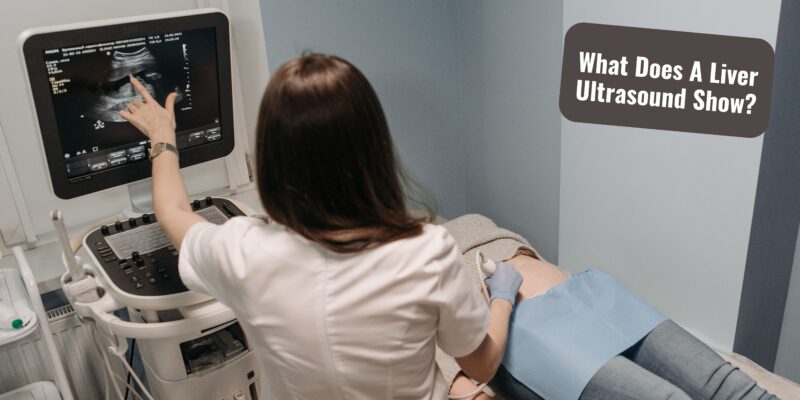
In the realm of diagnostic imaging, a liver ultrasound stands as a crucial tool in unraveling the intricate details of one’s liver health. This non-invasive procedure employs sound waves to generate images, offering valuable insights into the structure and condition of the liver. What does a liver ultrasound show, and why is it a pivotal diagnostic technique? Let’s delve into the intricacies of this medical marvel.
Unveiling the Basics
The primary benefit of a hepatic ultrasound is a thorough image of the internal structure of the liver. This imaging technique employs high-frequency sound waves that bounce off the liver’s tissues, creating detailed images that aid in the assessment of liver health. An ultrasound illuminates the liver’s size, shape, texture, and blood flow.
Assessing Liver Size and Structure
One of the fundamental aspects a liver ultrasound reveals is the size and structure of the liver. Unusual increases in liver size could be a sign of cirrhosis, hepatitis, or fatty liver disease. Conversely, a shrunken liver may be indicative of serious liver diseases.
Evaluating Liver Texture
Furthermore, liver texture is crucial to the diagnosis procedure. The smooth texture is characteristic of a healthy liver; any deviations may indicate underlying problems. The presence of nodules or irregularities can hint at conditions like liver cirrhosis or tumors, prompting further investigation.
Examining Blood Flow
A liver ultrasound evaluates blood flow within the organ, providing critical information about vascular health. A specialized method called Doppler ultrasound evaluates blood flow across the blood arteries in the liver. This helps identify conditions like portal hypertension or blood clots within the liver, offering valuable insights for a comprehensive diagnosis.
Detecting Abnormalities and Lesions
Furthermore, a liver ultrasound serves as a reliable method for detecting abnormalities and lesions within the organ. Whether it be cysts, tumors, or abscesses, these anomalies become apparent through the detailed imaging provided by ultrasound. That is why timely detection is crucial for initiating appropriate medical interventions.
Monitoring Liver Conditions
Frequent liver ultrasounds are essential for tracking the course of liver disease in people who already have liver problems. This proactive approach enables healthcare providers to make informed decisions about treatment plans and interventions, contributing to better patient outcomes.
Differentiating Between Benign and Malignant Lesions
Discerning between benign and malignant lesions is crucial for determining the appropriate course of action. Liver ultrasound aids in characterizing lesions, offering insights into their nature. This information guides healthcare professionals in developing tailored treatment strategies, enhancing the precision of medical interventions.
Navigating Potential Diagnoses
The revelations of a liver ultrasound may lead to various potential diagnoses, each requiring a tailored approach for optimal care. The accumulation of fat in liver cells is the hallmark of fatty liver disease, which frequently shows up as alterations in the size and texture of the liver on ultrasonography scans.
Hepatitis, an inflammation of the liver, may showcase alterations in blood flow and irregularities during ultrasound examinations. Changes in the size and texture of the liver are commonly used to diagnose cirrhosis, a late stage of liver scarring brought on by a variety of liver disorders and conditions.
The differentiation between these conditions is crucial for healthcare providers, and the thorough images provided by liver ultrasounds aid in precisely identifying and understanding the nature of the liver ailment.
Pregnancy and Liver Ultrasound
In the realm of obstetrics, liver ultrasound plays a crucial role in assessing liver conditions during pregnancy. Ultrasound exams can be used to evaluate diseases such as intrahepatic cholestasis of pregnancy, which is a pregnancy-related liver illness.
Additionally, liver ultrasonography aids in assessing how pregnancy affects pre-existing liver problems, protecting the health of the growing fetus as well as the mother. The safety and non-invasive nature of ultrasound makes it a preferred choice for monitoring liver health in pregnant individuals.
Beyond the Basics: Elaborating on Liver Ultrasound
While exploring what a liver ultrasound shows, it’s essential to delve into the nuances of advanced ultrasound techniques. Contrast compounds are used in contrast-enhanced ultrasonography (CEUS) to improve the visibility of liver lesions and blood vessels. This technique is particularly valuable in characterizing liver lesions and providing additional information for diagnosis.
Additionally, another contemporary ultrasonography method that gauges the stiffness of liver tissue is called elastography. This becomes crucial in assessing fibrosis and cirrhosis, offering a quantitative measure of tissue elasticity. The integration of these advanced techniques enhances the diagnostic capabilities of liver ultrasound, providing a more comprehensive understanding of liver health.
Addressing Common Concerns: Pain and Preparation
Nevertheless, understanding patient concerns is paramount in delivering quality healthcare. Many individuals worry about the potential pain associated with a liver ultrasound. It’s important to reassure them that this procedure is painless. The ultrasound transducer, a handheld device used during the examination, is gently moved across the abdomen, emitting sound waves without causing discomfort.
Addressing the preparation for a liver ultrasound is equally essential. To guarantee ideal imaging circumstances, doctors typically urge patients to fast for a few hours prior to the procedure. In order to improve patient compliance and the overall efficacy of the ultrasound examination, it is important to communicate clearly about the preparation stages.
Future Perspectives: Innovations in Liver Imaging
Medical imaging is a dynamic discipline where advances are improving diagnostic capabilities. New technologies that have the potential to improve liver ultrasound interpretation accuracy and efficiency include artificial intelligence (AI) and machine learning.
Large volumes of ultrasonography data can undergo analysis by AI algorithms, which help medical personnel find minor anomalies and make quick, accurate diagnoses. As these technologies evolve, the future of liver imaging appears poised for breakthroughs that will revolutionize diagnostic practices.
Conclusion: Decoding the Language of Liver Ultrasound
In conclusion, a liver ultrasound serves as a potent diagnostic tool, offering a window into the intricate world of liver health. From assessing size and structure to detecting abnormalities and monitoring conditions, the information from a liver ultrasound is invaluable in medical decision-making. As we navigate the realms of liver ultrasound, we unravel not just the mysteries of the organ but also the power of communication in the digital age.









